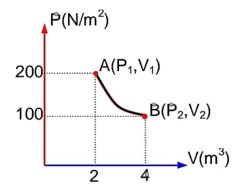Class 11th
Get insights from 8k questions on Class 11th, answered by students, alumni, and experts. You may also ask and answer any question you like about Class 11th
Follow Ask QuestionQuestions
Discussions
Active Users
Followers
New answer posted
3 months agoContributor-Level 10
Assuming Tension in metal wire suspended from roof varies linearly and 0 and T0 ( developed due its own weight) are tensions are ends of wire of length
New answer posted
3 months agoContributor-Level 10
Consider translational motion of a body
mg sinq - fS = ma .(i)
Consider rotational motion of body about its centre of mass
.(ii)
Using the condition of rolling without slipping at contact, we have
Using the condition of static friction, we have
Time required to reach the ground
New answer posted
3 months agoContributor-Level 10
This is because acceleration depends on both force and mass (F = ma).
We know that from Newton's Third Law. While action-reaction forces are always equal, the objects they act on usually have very different masses.
If you consider a falling stone and the Earth as an action-reaction pair. The Third Law tells us,
Earth pulls stone down with force F
Stone pulls Earth up with equal force F
But Earth's mass is enormous, so its acceleration is tiny (F/huge mass = tiny acceleration)
Stone's mass is small, so its acceleration is large (F/small mass = large acceleration)
Result: Stone falls noticeably, Earth's motion is unnoticeable.
New answer posted
3 months agoContributor-Level 10
The third law of motion by Newton may confuse you into thinking that action causes reaction in sequence. This is incorrect.
In reality, both forces exist at the exact same moment. When you push a wall, your hand pushes the wall. At the same time, the wall pushes back simultaneously. Not one, then the other. Just note that there's no time delay between them.
New answer posted
3 months agoContributor-Level 10
Action-reaction forces act on different objects. That's why they don't or cannot cancel out.
For instance, when you push a wall, you can observe two things.
Your hand pushes the wall (action)
The wall pushes your hand (reaction)
These are equal and opposite. But a close scientific examination will tell you that they are indeed acting on different things. To find your hand's motion, only consider the force on your hand (wall pushing back). The force from your hand affects the wall's motion, which is not yours.
New question posted
3 months agoTaking an Exam? Selecting a College?
Get authentic answers from experts, students and alumni that you won't find anywhere else
Sign Up on ShikshaOn Shiksha, get access to
- 65k Colleges
- 1.2k Exams
- 679k Reviews
- 1800k Answers


